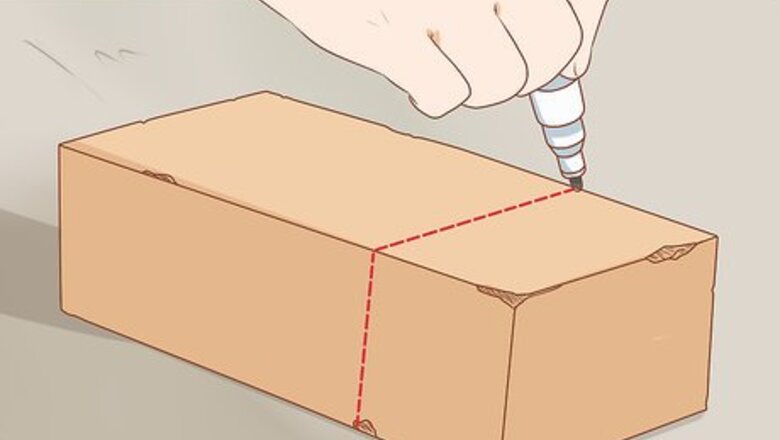
views
- Draw a cutline on each side of the brick, then place the brick onto a flat surface and align the sharp edge of your chisel at a 60-degree angle to your cutline.
- Hammer along the groove with a brick-set chisel to break off the unwanted piece, chipping off any problem areas should the cut not come clean.
- Draw a cutline, then use a circular power saw with a diamond masonry blade to saw along the top line 1⁄2 inch (1.3 cm) deep. Then, strike the cut end of the brick with a hammer.
Hammering with a Cold Chisel
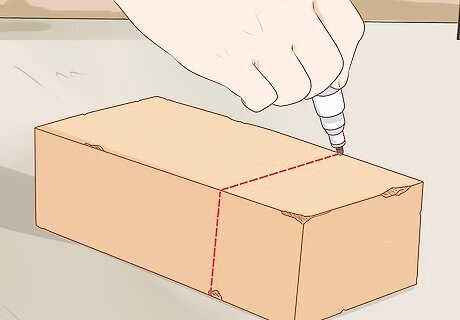
Draw a line on each side of the brick to create a cutline. Place the brick onto a flat surface. Hold a triangular layout square or ruler on top of the brick and draw the first line in pencil. Rotate the brick and draw the remaining lines until there are lines on each of the four sides of the brick. Be sure that the top and bottom lines and the pair of sides lines are parallel to each other—you need to accurately score along this line.
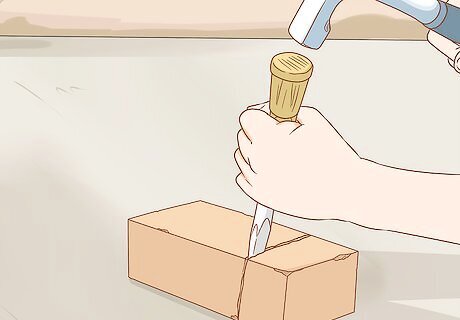
Score along the cutlines with a 1 inch (2.5 cm) wide cold chisel. Place the brick onto a flat surface and align the sharp edge of your chisel at a 60-degree angle to your cutline. Hammer the chisel gently while moving it along the marked line, alternating the chisel's angle between pointing downward to the left and downward to the right as you go. Continue this process until there is a ⁄16 inch (0.16 cm) groove all the way around the cutline. Don't hit the chisel too hard or you might end up breaking off more of the brick than you intend.
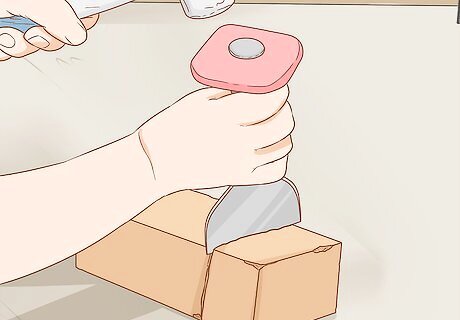
Hammer along the groove with a brick-set chisel to break off the unwanted piece. Be sure that the brick is on a flat surface with the side to be cut facing toward you. Place your brick-set chisel into the groove with the straight edge facing you. Tilt the tool's edge slightly away from you and begin striking the handle firmly with a hammer to break the brick into two pieces. If the brick doesn't come apart from a firm strike, score around the cutline once more with your chisel. Afterward, try hammering along the groove again.

Remove uneven and excess pieces of brick from the remaining piece. Once the removed piece is out of the way, use your brick-set and hammer to chip off any problematic areas. Look for uneven regions and excess pieces. If the brick is unsteady during this process, place it on a sandbag for support. For uneven spots, a stone carving file is a great tool. When using a file, always drag it along the brick away from you, lift it up, and bring it back. Repeat this process until the spot is even.
Cutting with a Circular Power Saw
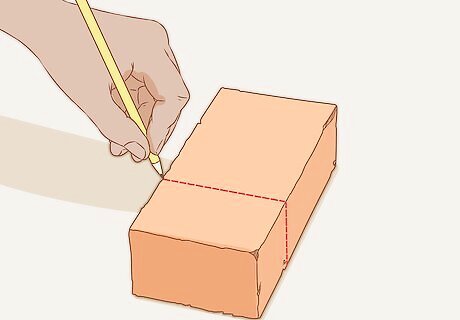
Draw a cutline onto the top and bottom of the brick with a pencil. Place a straight edge on top of the brick and mark a horizontal line with a pencil. Afterward, flip it over and do the same to the bottom side. Be sure that both lines are parallel to each other. Since you're only cutting along the top and bottom of the brick you can skip the sides when you're drawing lines.

Attach a diamond masonry blade to a circular power saw. Clip a pair of vice grips along the side of the old power saw blade to prevent it from moving. Loosen its center bolt using a wrench and take it off. Now, take off the small rim under the bolt—also known as the flange—and remove the old blade. Attach your new diamond blade and make sure that the teeth are facing opposite to the cutting direction. Lay the flange on top and retighten the bolt. Attach vice grips to the new blade while retightening the bolt to prevent it from moving.

Grip the handle with your left hand and place your right on the blade's shield. Practice moving the blade with your left hand and be sure you're comfortable with the saw. Hold the saw steady with your right hand. Push the blade against the brick to test its stability—it should remain in place. Place a small carpet or rubber mat under your brick if it's moving around.

Saw along the top line ⁄2 inch (1.3 cm) deep. Start by setting the saw blade to a depth of ⁄2 inch (1.3 cm). Now, turn on the saw and cut along the penciled line on top of the brick. As you use your left hand to guide the blade, use your right hand to press down on the saw and apply downward pressure to the brick. Repeat this process with the bottom of the brick until you have scorelines on the front and back surfaces. To adjust the blade depth, release the blade lever by loosening it. Now, move the base of the saw upward to reveal the blade. Stop when only ⁄2 inch (1.3 cm) of the blade is exposed and tighten the blade lever to lock the depth in place. Remove the blade from the brick every 30 seconds to maintain a cool blade temperature.
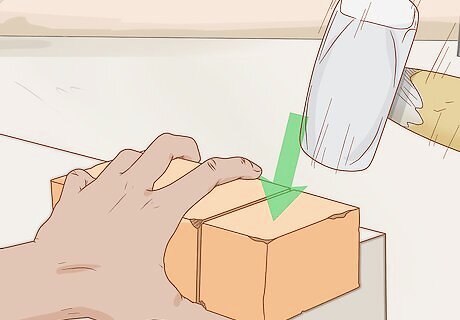
Strike the unwanted end of the brick after placing it on a step. Place the brick onto a step and hold it in place with your non-dominant hand. With your dominant hand, strike the unwanted end of the brick that is not supported by the step with a hammer. The brick should break into 2 pieces cleanly along the score lines. If you can't find a step, grab the brick with your hands and firmly hit the tip of the unwanted end onto a concrete floor. Just be aware that you're more likely to create a messy or jagged break using this method. Use a 1 inch (2.5 cm) wide cold chisel and hammer to remove jagged edges. Another alternative is a stone carving file. When using a file, stroke outward along the brick away from you. Afterward, lift the file, bring it back toward you, and repeat the process until the jagged edges are smooth.




















Comments
0 comment